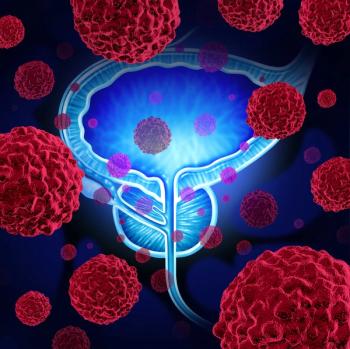
Lenalidomide Demonstrates Promising Activity in Pediatric Gliomas/Astrocytomas
Data from a phase 2 trial assessing lenalidomide in patients under 22 years of age also highlight an optimal dose level for this population.
The immunomodulatory agent lenalidomide (Revlimid) appeared clinically active and tolerable in pilocytic astrocytomas and optic pathway gliomas in a cohort of pediatric patients who progressed following initial therapy, according to findings from a phase 2 trial (NCT01553149) published in the Journal of Clinical Oncology.
Overall, 4 patients each who received the low-dose regimen—A group—and high-dose regimen—B group—experienced an objective response. This translated to an objective response rate (ORR) of 12.9% (95% CI, 4.09%-22.6%) in both groups. The estimated probability of early disease progression was 16.2% (95% CI, 9.2%-29.5%) with regimen A and 10.8% (95% CI, 5.48%-23.1%) with regimen B. As such, both regimens outperformed the predefined levels of interest, which were a 20% or greater ORR and a 25% or smaller early local progression rate.
In the combined population, the 2-year event-free survival (EFS) rate was 46% (95% CI, 34%-57%), and the overall survival (OS) rate was 93% (95% CI, 84%-97%) after a median potential follow-up of 60.2 months. The corresponding figures for regimen A were 43% (95% CI, 27%-58%) and 95% (95% CI, 80%-99%), respectively, as well as 48% (95% CI, 31%-63%) and 92% (95% CI, 77%-97%) for regimen B.
“Following the phase 1 studies of lenalidomide in children, two questions remained, namely, were responses dose-related and was toxicity dose-related. A maximum tolerated dose was not defined in the initial phase 2 pediatric brain tumor study as doses much higher than the adult maximum tolerated dose were tolerated and dose escalation was halted after 10 dose levels were evaluated,” the investigators wrote. “We now demonstrate that drug efficacy, most often expressed in this study as long-term stable disease, was not dose-related. In addition, treatment-limiting toxicities did appear to be dose-related, suggesting unnecessary additional risk without additional benefit.”
Investigators of the study enrolled 75 patients younger than 22 years old between March 2012 and January 2017, 74 of whom were included in final evaluations for response with regimen A (n = 37) and regimen B (n = 37). The median number of treatment cycles was 14 (range, 2-26) in the regimen A group and 11 (range, 1-26) in the regimen B group.
The median patient age was 9 years (range, 2-18). Most patients were male (58%), and the vast majority were White (82%) and non-Hispanic or -Latino (89%). Moreover, most patients had received no more than 2 prior treatment regimens (77%), and most (97%) had received prior multiagent systemic chemotherapy.
Lenalidomide was delivered in 2.5 mg, 5 mg, and 25 mg capsules. Regimen A called for a lenalidomide dosage of 20 mg/m2, whereas regimen B called for 115 mg/m2. Each dosage was rounded to within 10% of the prescribed dose for convenient administration with the available capsule sizes. Patients received treatment daily for 21 days of each 28-day cycle for a maximum of 26 cycles.
The primary end point was ORR in both treatment groups. Secondary end points included EFS, pharmacokinetics, and the toxicity profile.
The most common toxicity was myelosuppression. Grade 4 neutropenia affected 2 patients receiving regimen A and 12 receiving regimen B.
In total, 15 patients discontinued therapy for reasons aside from toxicity, most common of which were due to the patient’s best interest (n = 1), reasons not otherwise specified (n = 3), vision loss (n = 1), an alternative therapy (n = 2), persistent diarrhea (n = 1), compliance reasons (n = 1), or parent refusal (n = 6).
Investigators noted that the lack of an available comparable historical cohort was among the limitations to this study, as was the lack of patient tissue obtained and the failure to stratify patients according to the presence or absence of neurofibromatosis.
“[Lenalidomide] may be a treatment option in this population, particularly since low-grade glioma is treated as a chronic disease, lenalidomide has a limited range of acute toxicities, and does not have the known risk of second malignancies associated with alkylator therapies,” the investigators concluded. “Further evaluation of its activity and underlying mechanisms of action in this population is warranted to best determine its role in the treatment of these patients.”
Reference
Warren KE, Vezina G, Krailo M, et al. Phase II randomized trial of lenalidomide in children with pilocytic astrocytomas and optic pathway gliomas: a report from the Children's Oncology Group. J Clin Oncol. 2023;41(18):3374-3383. doi:10.1200/JCO.22.01777
Newsletter
Stay up to date on recent advances in the multidisciplinary approach to cancer.

























































































